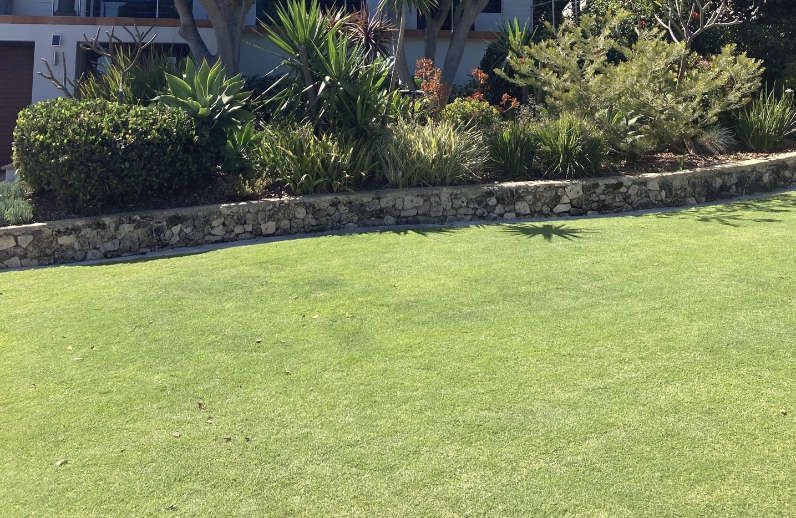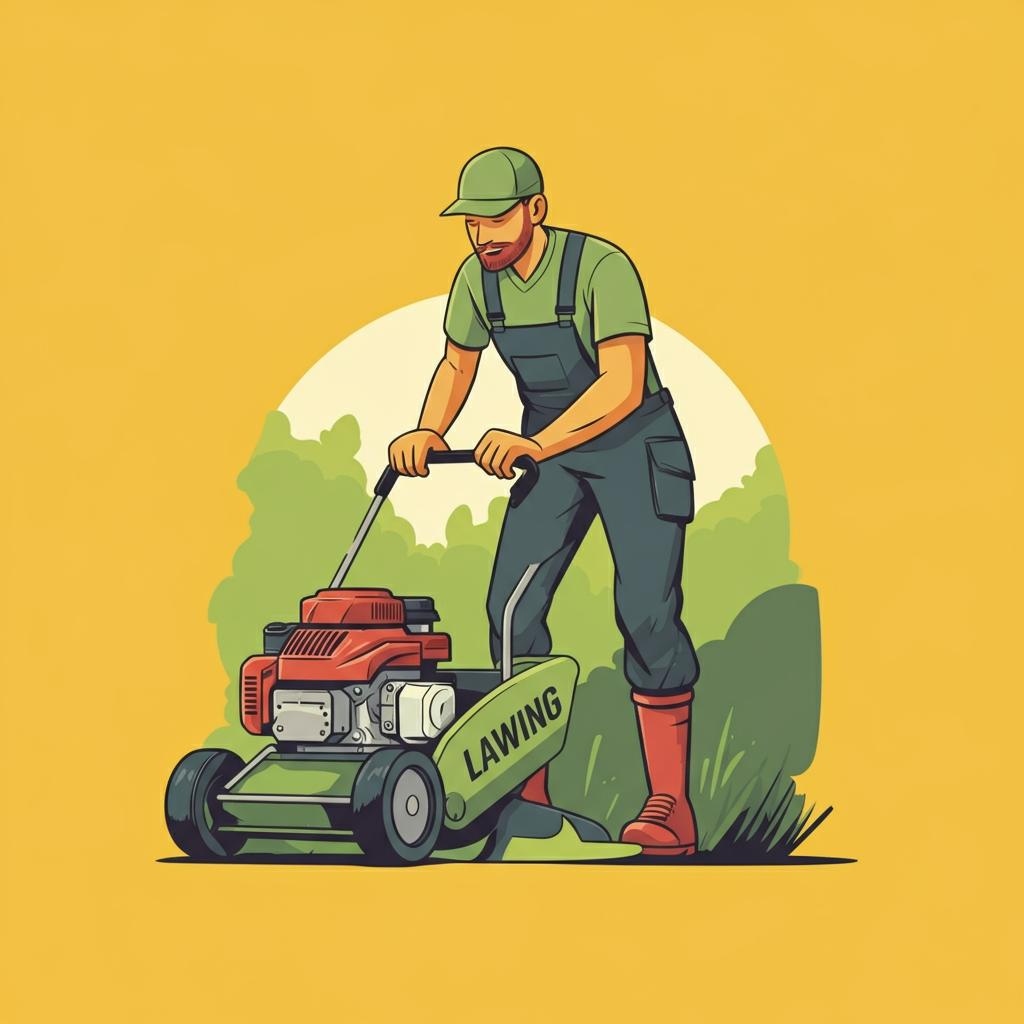Lawn Mowing Central Coast: The Ultimate Local Guide for Homeowners and Retirees
Imagine waking up on a sunny Central Coast morning, stepping outside with a cup of coffee, and admiring a lawn that’s neat, green, and inviting. Maintaining such a beautiful yard is a point of pride for many homeowners and retirees on the Central Coast – and lawn mowing is at the heart of it.
In this friendly guide, we’ll explore how the Central Coast’s unique climate affects your lawn, share practical mowing tips, and help you keep your grass healthy and gorgeous all year round. Whether you’re a busy homeowner or enjoying retirement bliss, these tips will make lawn care easier and more rewarding.

Why a Well-Maintained Lawn Matters
A well-kept lawn isn’t just about looks – it provides real benefits for you and your community. Regular mowing and care lead to stronger roots and thicker grass, which means your lawn can better resist weeds, pests, and diseases. Consistently trimmed grass also tends to grow more densely (thanks to lateral shoots that fill in bare spots). The result? A lush, carpet-like lawn that stays vibrant through the seasons. On the Central Coast, where outdoor living is a big part of life, a healthy lawn extends your living space for BBQs, family playtime, or simply soaking up the sunshine.
There’s also the practical side: keeping the grass at a reasonable height reduces hiding places for pests like snakes or mosquitoes and helps avoid fire hazards in dry spells. Plus, when your lawn is regularly mowed and cared for, it improves your home’s curb appeal and even property value. Neighbours appreciate it too – a tidy front yard makes the whole street look more welcoming. For retirees who spend more time at home, a green lawn can be a source of daily joy and a satisfying hobby, while for busy families it’s a safe, soft area for kids and pets to play.
Central Coast Climate and Grass: What You Should Know
Lawn care on the Central Coast isn’t one-size-fits-all – our local climate plays a big role. The Central Coast region of NSW enjoys a mix of subtropical and temperate conditions, which means your lawn will battle through hot, humid summers as well as the occasional dry spell. In practical terms, grass here can grow quickly when warmth and moisture are abundant, but it might struggle during droughts or heatwaves. Knowing how our climate affects growth will help you adjust your mowing routine throughout the year.
Common grass types: Many Central Coast lawns feature warm-season grasses like Kikuyu or Buffalo.
These varieties love our warm summers. Buffalo grass is popular with homeowners because it tolerates heat and humidity and is fairly low-maintenance. It has a deep root system that helps it stay greener longer during dry patches, needing less watering than fussier grasses. Buffalo is also quite shade-tolerant, which is handy if your yard gets dappled sun – it “copes admirably” with the varied sun and shade conditions across the Central Coast. Kikuyu, on the other hand, is like the energetic cousin – it grows very fast and repairs itself quickly, making it great for high-traffic lawns. Kikuyu grass also handles coastal conditions well; it has a moderate salt tolerance rated around 7 out of 10 (higher than Buffalo’s ~5/10), so it thrives even if your property is near ocean spray. The downside is that fast growth means more frequent mowing to keep Kikuyu under control. Most Central Coast lawns will be one of these or similar hardy varieties suited for our climate.
Seasonal growth patterns: Thanks to mild winters, our grass never completely stops growing, but it does slow down in the coolest months (June–August). In spring and summer, be ready for a growth spurt! It’s common to need weekly mowing during the spring and summer to keep up. In shaded or cooler pockets (or if there’s a dry period), the growth may be a bit slower, so you can adjust accordingly. During autumn, growth tapers off; you might mow every 2–3 weeks as needed. In winter, some lawns can go a month or more without mowing if the grass is barely growing – just keep an eye on it. The key is to mow when the grass is actually due for a cut, rather than on a strict schedule, since over cutting a slow-growing winter lawn can stress it.
Seasonal Lawn Care Tips for Central Coast Yards
Each season brings its own lawn care tasks. By timing your mowing and other maintenance to the seasons, you’ll keep your lawn in top shape year-round. Here’s a quick seasonal guide:
- Spring (Sep – Nov): The lawn wakes up and grows faster as the weather warms. This is the time to start mowing more frequently – about once a week is usually ideal as spring growth kicks in. It’s also a great season to fertilise and tackle weeds early, so your grass has nutrients for the growing season. Consider aerating compacted soil in spring to help roots breathe and absorb spring rains.
- Summer (Dec – Feb): Summers on the Central Coast are warm to hot, often humid, with occasional dry periods. Grass can grow vigorously now, so weekly mowing remains the norm. One important tip for summer is to raise your mower’s cutting height a notch higher than usual. Keeping the grass a bit longer provides shade to its own roots and soil, helping retain moisture and protect against heat stress. Avoid cutting more than one-third of the grass blade length in any single mow – following this “one-third rule” keeps your lawn healthier. And try not to mow in the blazing mid-day sun; mowing during the hottest part of the day can put your grass into shock (not to mention it’s tougher on you, too!). Morning or late afternoon is safer for the lawn and the mower operator.
- Autumn (Mar – May): As temperatures start to cool and daylight shortens, your lawn’s growth will slow down. You can dial back the mowing frequency to maybe every other week (or as needed) without the grass getting out of control. Autumn is a good time to over seed any thin patches (especially if you have cool-season grass mixed in) and to fertilise once more early in the season to fortify the lawn before winter. Keep mowing until the growth really slows to a crawl – you want to head into winter with grass at a medium height, not too long (to avoid pests or fungus in long, damp grass) but not scalped short either.
- Winter (Jun – Aug): Winters on the Central Coast are relatively mild, but cool enough to slow grass growth significantly. Many warm-season grasses go semi-dormant (they might lose some colour and grow very slowly). You might only need to mow once a month or simply tidy edges, depending on the weather. Avoid mowing on very cold mornings or if frost is present – it can damage the grass. Use winter as a time to service your mower (sharpen those blades!) and plan any lawn improvements for spring. If we get heavy winter rain, ensure you’re not mowing a waterlogged lawn – wait for it to drain to avoid tearing up the grass.
By adjusting your care each season, you’ll prevent problems and ensure your lawn always gets exactly what it needs at the right time. For example, mowing higher in summer and less in winter is a simple trick that keeps your lawn resilient and reduces stress on the grass.
Mowing Best Practices for a Healthy Lawn
Let’s talk mowing technique – doing it right will make a world of difference in how your lawn looks and how well it grows back. Here are some tried-and-true mowing best practices, especially suited for Central Coast lawns:
- Follow the one-third rule: Never cut off more than one-third of the grass blade length in a single mowing session. If your lawn’s a bit overgrown (we’ve all been there after a rainy holiday week!), don’t hack it down in one go. Instead, take it down in stages over a couple of mows. Cutting too much at once shocks the grass, leaving it weak and discoloured.
- Maintain the right height: Ideal mowing height depends on your grass type, but generally keep warm-season grasses like Buffalo and Kikuyu around 4–5 cm high for home lawns. In the peak of summer, raise that a bit (as mentioned earlier) to help shade the soil. A slightly taller lawn in summer also means the soil won’t dry out as quickly.
- Keep mower blades sharp: Dull blades tear the grass rather than cut it cleanly. Torn grass edges turn brown and invite disease. Sharp blades give a clean cut, which heals faster and keeps the lawn looking neat. If you notice the grass tips look ragged or frayed after mowing, it’s time to sharpen or replace your blade.
- Mow when the grass is dry (and cool): It’s best to mow when your lawn is dry. Wet grass tends to cut poorly and can clog your mower. Also, mowing during cooler parts of the day (morning or late afternoon) is easier on the grass. As mentioned, avoid the hottest midday hours. On the Central Coast, summer midday sun can be intense, so timing your mow can really make a difference for both you and your lawn.
- Mix up your mowing pattern: If you always mow in the same direction, your grass can start to lean one way and the soil may even develop mild ruts. Every few mows, change direction (for example, mow east-west one week and north-south the next). This encourages the grass to grow upright and get evenly cut. It also adds a nice crisscross look to the lawn – think of those striped football fields!
- Don’t scalp the edges: Be careful on uneven ground or along edges not to dip the mower too low. Scalping (cutting the grass extremely short) can create bald patches that invite weeds. If your lawn has an area that’s bumpy, you might adjust the mower wheels higher for that section or use a trimmer for tricky spots rather than risk scalping with the mower’s full weight.
- Mulch clippings when possible: Many mowers have a mulching feature – this chops grass clippings into fine pieces that fall back into the lawn. These tiny clippings act as free fertiliser by returning nutrients to the soil as they break down. On the Central Coast, where soil can always use a bit more organic matter, mulching is beneficial. Just avoid mulching if the grass was extremely long (large clumps of clippings can smother the lawn – in that case, collect or rake them up).
- Safety first: Lastly, always practice safety. Clear the lawn of sticks, rocks or kids’ toys before mowing to prevent projectile hazards. Wear sturdy shoes (no thongs while mowing, please!). For our retirees, take mowing at a comfortable pace and stay hydrated on warm days. If you’re in the 60+ age bracket, be extra cautious – studies show a large share of lawn mower-related injuries happen to older adults. No lawn care task is worth risking your wellbeing, so if it’s a scorching day or the terrain is difficult, don’t hesitate to ask for help or take a break.
By mowing with good habits like these, you’ll notice your lawn’s condition improve. Healthy mowing practices lead to grass that’s not only attractive but also tougher against weeds and pests – and that means less work and worry for you in the long run.
Watering and Mowing: Finding the Balance
You can’t talk about mowing without mentioning watering – the two go hand in hand for lawn health. Central Coast residents need to be smart about watering, especially with our climate’s swings between humid rainy periods and dry spells. A common mistake is overwatering or shallow daily watering, which can make the grass grow too fast and develop shallow roots. Instead, water deeply but infrequently.
On the Central Coast, a good rule of thumb is to water two to three times a week (adjusting for rain) and do it in the early morning. Morning watering gives the lawn a chance to drink up before the day’s heat, and any excess will evaporate, meaning you’re less likely to invite fungal diseases that can happen with overnight dampness.
How does this relate to mowing? Well, try to avoid mowing right after watering. It’s best if the grass is dry – you’ll get a cleaner cut and avoid making ruts in soft, wet soil. Also, if your lawn is a bit drought-stressed (you see it looking limp or you notice footprints linger in the grass after you walk on it, which is a classic sign), hold off on mowing until after you’ve watered and the grass has recovered. Mowing a drought-stressed lawn can damage it more. In dry summer stretches, letting the lawn grow a tad taller (within reason) will also shade the soil and reduce how often you need to water.
And remember, a healthy lawn maintained at a proper height will use water more efficiently than an overgrown, thatchy lawn.
Speaking of water, keep an eye on local water restrictions in case we have a drought. The Central Coast sometimes faces water usage rules, but generally lawns can be kept healthy with wise watering practices. Your lawn will thank you with year-round green if you get that mowing-watering balance just right!
Being a Good Neighbour: Noise and Timing Considerations
One thing that often gets overlooked in lawn care is the impact on your neighbours. We’ve all heard that one loud mower roaring away at 7am on a Sunday – and it’s not a great start to anyone’s day. To keep peace in the neighbourhood, it’s important to mow at considerate times. In fact, there are regulations in NSW about when you can use power tools like lawn mowers. Generally, you should avoid using mowers between 8pm and 7am on weekdays, and between 8pm and 8am on Sundays or public holidays as per legal aid. These rules are in place to prevent noise disturbances. So, as a rule, late morning or late afternoon mowing not only is kinder to your grass, but it’s kinder to your neighbours too.
Besides timing, using a well-maintained mower can reduce noise (old, poorly tuned engines are louder and can emit more smoke – another neighbour no-no). Some Central Coast residents are even switching to battery-electric mowers, which are much quieter than traditional petrol mowers. If you’re mowing in an area with close neighbours, these can be a great option to consider for the future to keep noise low.
In short, by choosing the right time of day and keeping your equipment in good shape, you’ll maintain good relationships with those next door. After all, part of the Central Coast charm is the friendly community vibe – a little consideration goes a long way.
Lawn Care Tips for Homeowners and Retirees
We know that homeowners and retirees might approach lawn care a bit differently, so let’s speak to each:
For busy homeowners: Juggling work, family, and chores can make it tough to give your lawn consistent attention. The key is efficiency and a good schedule. Try setting aside a regular “lawn day” once a week during the growing season – treat it like an appointment. Mow the lawn, do a quick edge trim, and inspect for any emerging weeds or issues. Regular check-ins prevent small problems from exploding into big headaches. If time is short, focus on mowing and watering first (they give the most visible payoff).
Don’t hesitate to invest in some quality tools – a reliable self-propelled mower or a cordless trimmer can speed up the work significantly. Also, consider getting the family involved: teenagers can learn responsibility by helping with mowing or raking, and younger kids can assist with safe tasks like watering potted plants at the same time. Lastly, if you find yourself consistently overwhelmed, remember it’s perfectly okay to get professional help. Many Central Coast families hire lawn mowing services for the weeks they’re extra busy or away on holidays, so they don’t return to a jungle for a yard.
For retirees: If you’re enjoying retirement on the Central Coast, lawn care can be a wonderful hobby that keeps you active and outdoors. You have the advantage of flexible time – you can mow in the mornings or weekdays when others might be at work. Take advantage of the cooler parts of the day for physical tasks. Also, listen to your body: power tools like mowers and whipper-snippers have some heft, so use ergonomic techniques (like not bending too much, taking breaks, staying hydrated). Many retirees find mowing to be a satisfying exercise, but as we mentioned, older adults should be cautious because they make up a large portion of lawn mower injury statisticspublichealth.jhu.edu. Safety is paramount: always wear proper shoes, eye protection, and perhaps ear protection. If your lawn is large or uneven and it’s becoming hard to manage, look into services that offer discounted rates for seniors – keeping your independence doesn’t mean you can’t get a little help.
You might choose to mow the easier front yard yourself for the enjoyment, but hire help for heavy tasks or the backyard. This way, you stay safe and still get the pleasure of gardening.
Both homeowners and retirees should keep in mind that lawn care is a marathon, not a sprint. Consistency beats occasional intense effort. It’s better to mow routinely and lightly than to hack down an overgrown lawn infrequently. By pacing yourself (and possibly getting some assistance when needed), you’ll maintain a great lawn without burnout.
When to Call in the Professionals
Sometimes, the best way to enjoy your lawn is to let someone else do the heavy lifting. Professional lawn mowing services (like our team at Central Coast Lawn Mowing Group) exist for a reason – they make life easier and yards healthier. Here are a few signs it might be time to call in the pros:
- Lack of time: If weeks are passing between mows because you just can’t fit it in, a pro can get your lawn back on track and on a regular schedule.
- Physical strain: Lawns can be larger than they look! If mowing leaves you exhausted or aggravates health issues, it’s wise to get help. This is especially true for those golden-age retirees – save your energy for enjoying the garden, not wrangling the mower.
- Persistent lawn problems: Are you seeing bald patches, weed infestations, or pest damage that you’re not sure how to handle? A local lawn care expert can diagnose and treat these issues. For instance, Central Coast lawns can sometimes get weeds like bindi's or pests like lawn grubs; professionals know how to tackle them safely.
- Desire for perfection: Maybe you’re hosting a big family event or you just love the look of a manicured lawn. Pros have commercial-grade equipment that can give that carpet-like finish and sharp edging that are hard to DIY. They also can handle extras like fertilising, aeration or re-seeding bald spots at the right times.
Hiring a lawn service doesn’t mean you’re not hands-on – it just means you’re smart about allocating your time. You can always do the fun bits like watering your flowers or trimming a small hedgerow, and leave the routine mowing or tough jobs to your trusted lawn team. On the Central Coast, engaging a lawn mowing service also supports local business, and you often get the benefit of their knowledge about what works best in our area’s conditions.
Conclusion
A beautiful lawn is truly within reach for every Central Coast homeowner and retiree. With a bit of knowledge and a regular routine, lawn mowing Central Coast style can be less of a chore and more of a satisfying ritual. Remember the basics: mow at the right height and frequency for the season, keep your mower in good nick, and work with the local climate rather than against it. Our unique Central Coast weather – from balmy summers to gentle winters – means we can enjoy our green yards year-round if we care for them properly.
By following the tips in this guide, you’ll be well on your way to a lawn that’s the envy of the street. And if you ever need a hand or expert advice, don’t hesitate to reach out to local professionals who are eager to help keep Central Coast lawns looking their best. Here’s to a healthy, happy lawn and many enjoyable days spent in your outdoor oasis!





